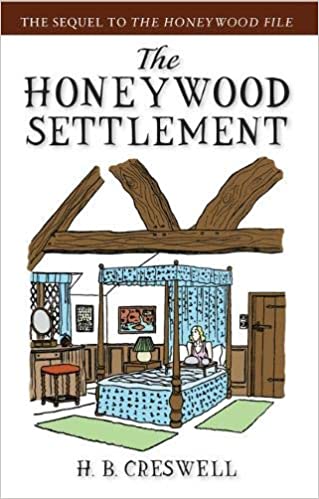This website uses cookies
This website uses cookies to enable it to function properly and to analyse how the website is used. Please click 'Close' to accept and continue using the website.


Classic Books: The Honeywood File (1929) and The Honeywood Settlement (1930)
H B Creswell (Academy Chicago Publishers, 232pp, £16.50)
Reviewed by Grace Etherington

These two books were recommended to me by David Heath, chair of our Casework Committee, who told me The Honeywood File was one of the best books about the trials and tribulations of being an architect and the relationships between the parties involved – as well as very funny. He says the books were a key read during his training; I’m not an architect and, in all honesty, they have only reinforced my lack of desire to be one.
The Honeywood saga – which presents an intimate picture of the adventure of building a house – was serialised in the Architects’ Journal during the 1920s and later reissued as two books. The central figures are Sir Leslie Brash, an economist and financier, and James Spinlove, a discerning yet relatively inexperienced independent architect. Brash has purchased a plot of land in rural Kent, and commissions Spinlove to design a large country house for the family. Other characters include Grigblay the builder, Brash’s solicitors Russ & Co, Lady Brash, Tinge the quantity surveyor, and Mr Potch who sits on the local parish council (an architect with a tendency to meddle with others’ work).
The transactions between these characters are illuminated by candid commentary from Creswell, who builds a sense of foreboding about the repercussions to come later. Creswell was a practising architect himself, and you get the impression that some of the unsavoury incidents were inspired by his own experiences. The exchanges between Brash and Spinlove show that Brash is demanding, short-tempered and old-fashioned, while Spinlove’s handling of difficult situations leaves a lot to be desired. He is often tactless, bluntly rebutting Brash’s suggestions and doing little to flatter his client in the manner to which he is accustomed.
The list of upsets and scandals is substantial, with trouble arising from the parish council, the water supply, dry rot, unsatisfactory bricks, self-locking doors and unaccounted-for extras. Among the biggest catastrophes are a new super-paint called Riddoppo, which had a dedicated chapter in book one called ‘A Storm in a Paintpot’, and the mystery of the smell, referred to by Brash in one letter as ‘malodorous emanations’, ‘unsavoury effluviums’ and ‘nauseating savours’. I won’t spoil the suspense by revealing the cause of it, but as is often the case Spinlove emerges unscathed, thanks mostly to luck. The final twist is a happy ending in the form of a romance between Spinlove and Brash’s daughter Phyllis, known affectionately as Pud. Their engagement brings the saga to a close, and the difficulties of inflated costs, delays and ‘effluviums’ are quickly forgotten.
The books have been reprinted several times by various publishers in the last 90 years, and second-hand copies are well worth looking out for. And surely it must be time for a BBC dramatisation?
We are still populating our book review section. You will be able to search by book name, author or date of publication.

Become a C20 member today and help save our modern design heritage.